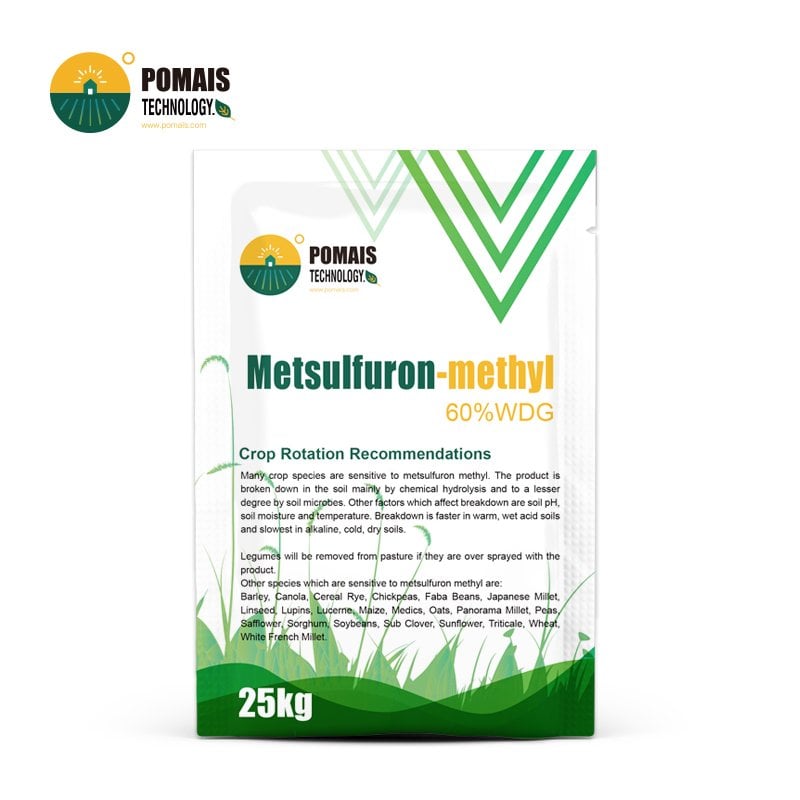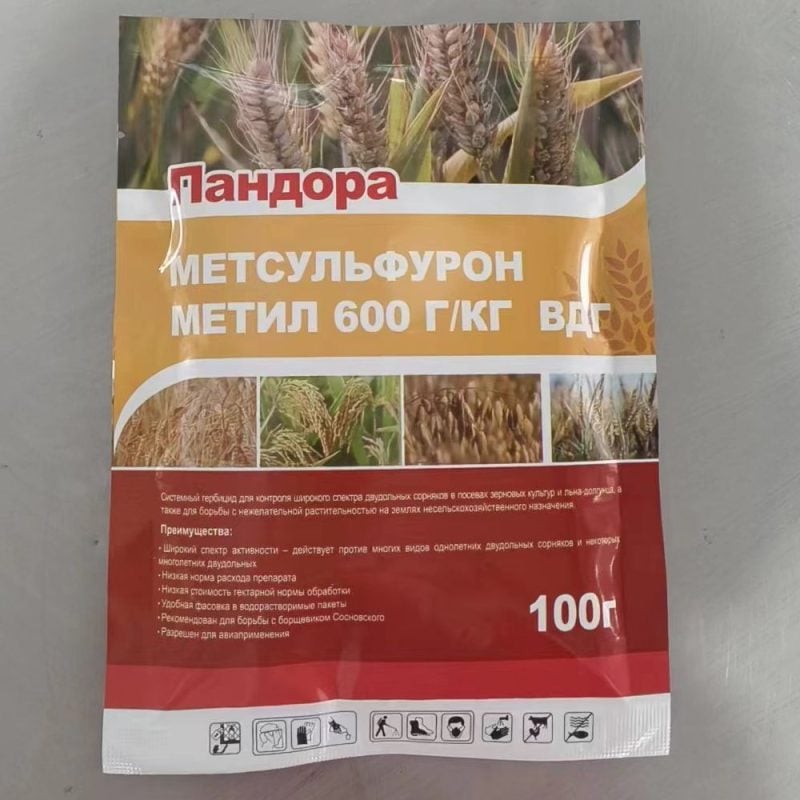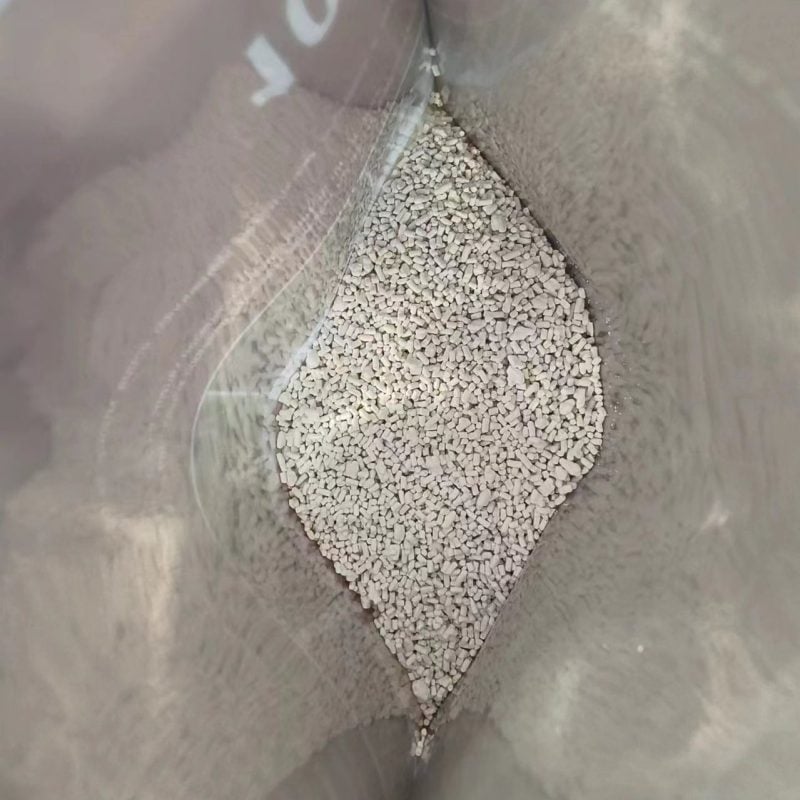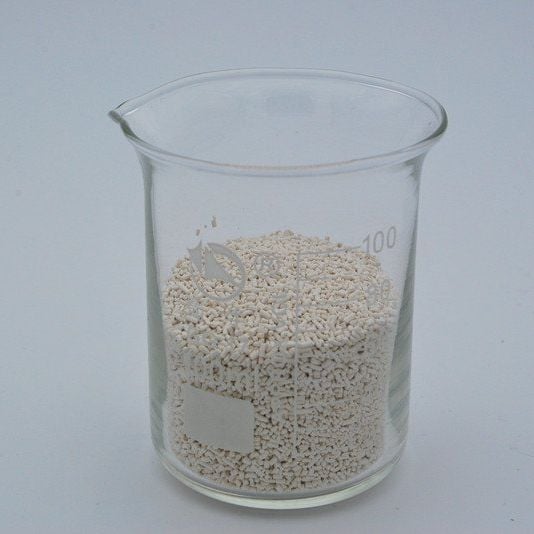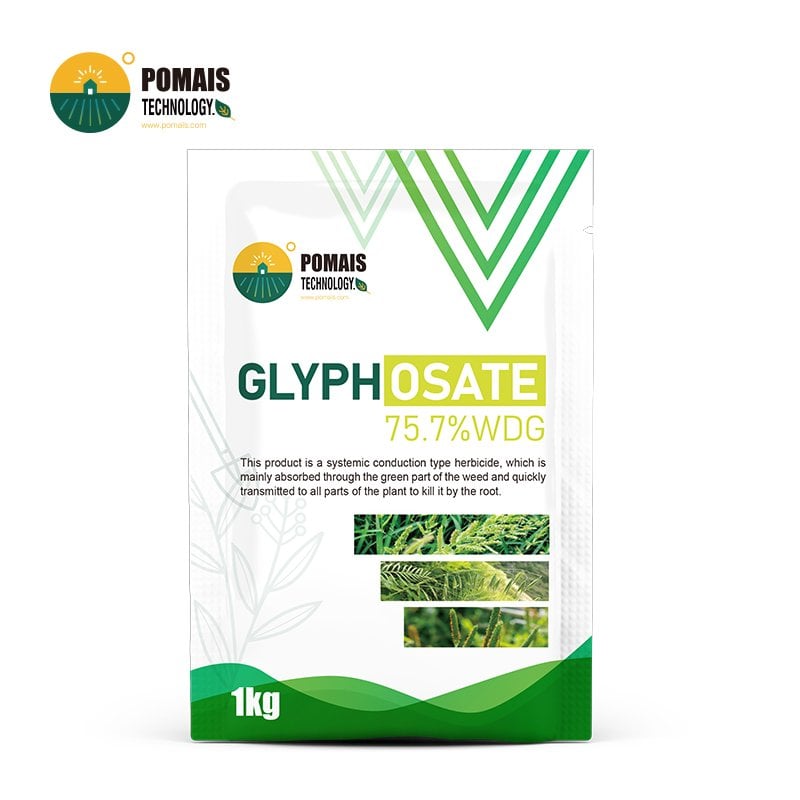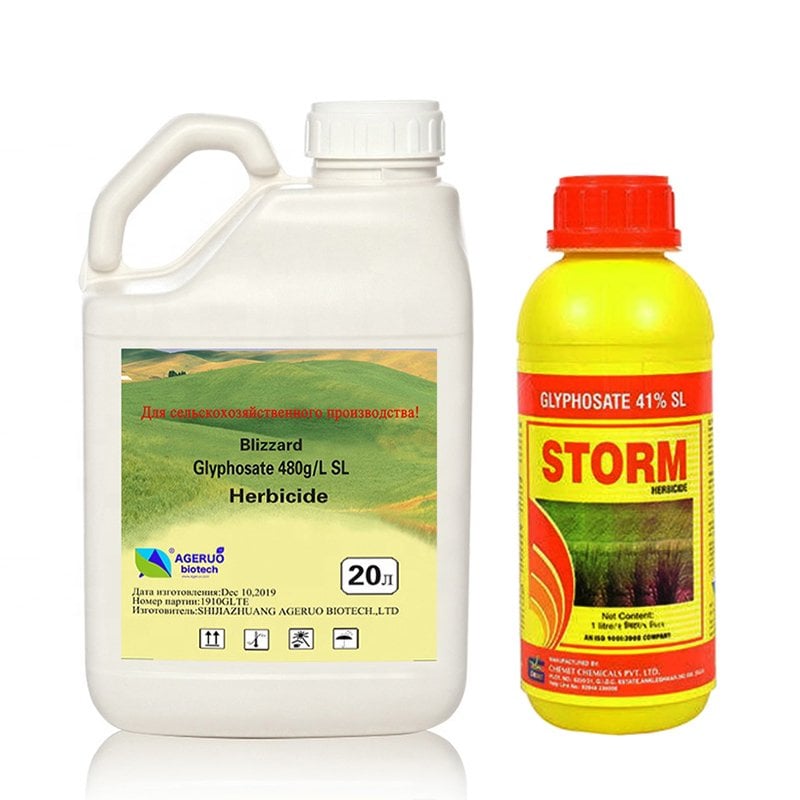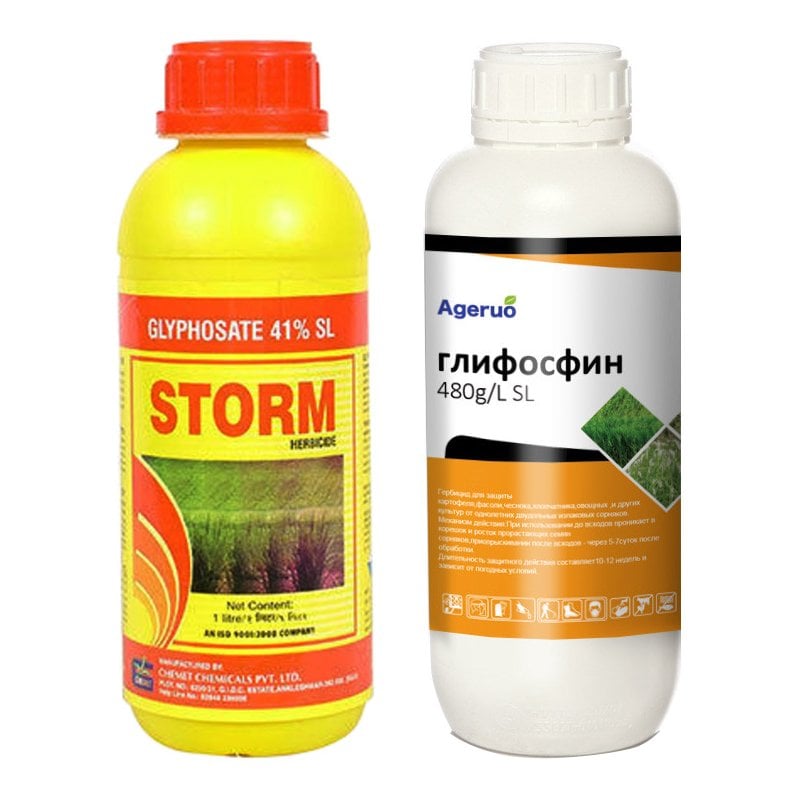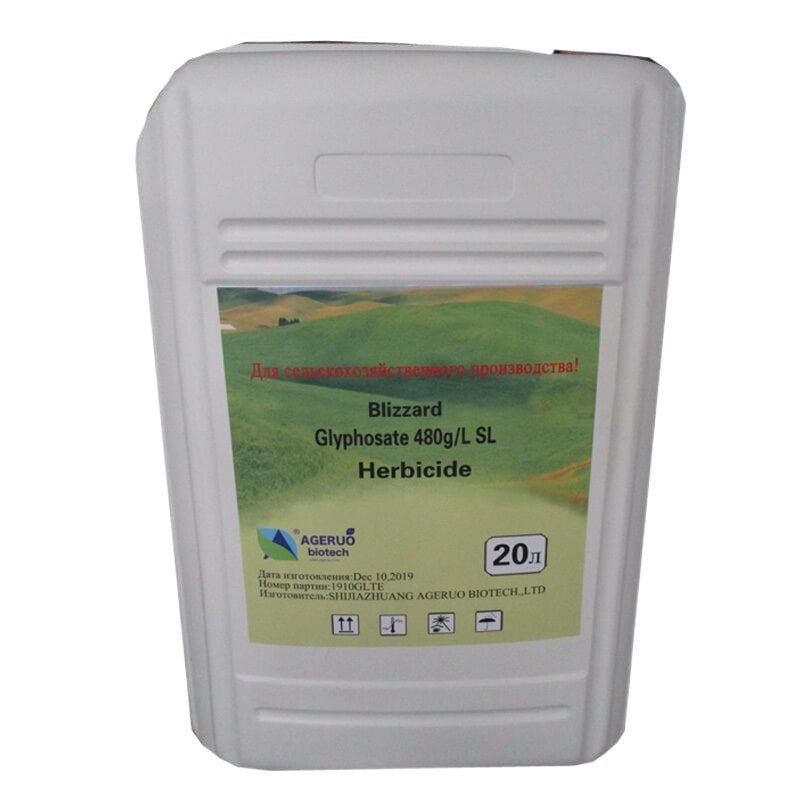2, 4-D metsulfuron methyl or glyphosate: What’s the difference?
Each of these herbicides—2,4-D, Metsulfuron-methyl, and Glyphosate—serves different purposes and targets distinct types of weeds. Here’s a breakdown of their key differences:
2,4-D Herbicide
2,4-D is one of the oldest and most widely used herbicides in the world, first introduced in the 1940s. It belongs to the phenoxy herbicide group and works as a selective herbicide. This means that it targets broadleaf weeds without affecting grasses, making it suitable for lawns, pastures, and cereal crops like wheat, corn, and rice.
- Mode of Action: 2,4-D is a selective systemic herbicide that mimics the plant hormone auxin, disrupting growth processes in broadleaf weeds. It causes uncontrolled growth leading to plant death.
- Target Weeds: Primarily controls broadleaf weeds in grasses (such as cereal crops, corn, and turf). It does not harm grasses.
- Applications:
- Selective use in agricultural crops, lawns, and non-crop areas.
- Commonly mixed with other herbicides like Glyphosate or Dicamba to expand its weed control spectrum.
- Selectivity: Selective for broadleaf weeds, meaning it will not kill grasses and cereals.
- Common Use: Agricultural crops like wheat, barley, corn, as well as turf and lawns.
Metsulfuron-methyl Herbicide
Metsulfuron Methyl is a selective, post-emergent herbicide that is part of the sulfonylurea family. It targets a wide range of broadleaf weeds and some grass species in crops such as wheat, barley, and in non-crop areas.
- Mode of Action: Metsulfuron-methyl is a sulfonylurea herbicide that inhibits the enzyme ALS (acetolactate synthase), disrupting the production of amino acids in the plant. This halts growth and eventually leads to the plant’s death.
- Target Weeds: Controls a wide range of broadleaf weeds and brush species, and can also manage certain grasses in non-crop areas.
- Applications:
- Used in cereal crops, pastures, forestry, and non-crop areas.
- Effective for brush and woody species control in pastures and non-crop areas.
- Selectivity: More selective than Glyphosate, often used in combination with other herbicides.
- Common Use: Primarily for broadleaf weed control in wheat and barley, as well as in pastures and forestry management.
Glyphosate Herbicide
Glyphosate is a non-selective, broad-spectrum herbicide, widely recognized for its use in both agricultural and non-agricultural settings. It targets all plant types, including both broadleaf weeds and grasses. It is the active ingredient in many products, such as Roundup.
- Mode of Action: Glyphosate is a non-selective systemic herbicide that inhibits the EPSP synthase enzyme, which is essential for the synthesis of amino acids in plants. It translocates throughout the plant, killing both the above-ground foliage and roots.
- Target Weeds: Controls almost all annual and perennial grasses, broadleaf weeds, and woody plants. Glyphosate is highly effective for killing all types of vegetation.
- Applications:
- Commonly used in agricultural crops, non-crop areas, lawns, aquatic weed control, and no-till farming.
- Useful for total vegetation control in areas where no regrowth is desired, such as industrial sites or before replanting.
- Selectivity: Non-selective, meaning it kills most plants, including broadleaf weeds and grasses.
- Common Use: Applied in no-till farming, pre-planting, aquatic weed control, and non-crop areas like roadsides and industrial sites.
Summary of Differences
| Herbicide | Mode of Action | Target Weeds | Selectivity | Common Uses |
|---|---|---|---|---|
| 2,4-D | Mimics auxin | Broadleaf weeds | Selective for broadleaf weeds | Cereal crops, corn, turf, lawns |
| Metsulfuron-methyl | Inhibits ALS enzyme | Broadleaf weeds, brush species | Selective for broadleaf weeds and some brush | Wheat, barley, pastures, forestry |
| Glyphosate | Inhibits EPSP synthase enzyme | Annual & perennial grasses, broadleaf weeds, woody plants | Non-selective | Agriculture, non-crop areas, aquatic control |
Which to Choose?
- For selective broadleaf weed control in cereal crops or lawns, 2,4-D is an excellent choice.
- Metsulfuron-methyl is ideal for broadleaf and brush control in agricultural fields, pastures, and forestry.
- Glyphosate is the best option when total vegetation control is needed, especially in non-crop areas or for no-till farming.
If you need help deciding which herbicide is best for your specific needs, feel free to reach out for tailored advice!
Each of these herbicides—2,4-D, Metsulfuron-methyl, and Glyphosate—serves different purposes and targets distinct types of weeds. Here’s a breakdown of their key differences:
2,4-D Herbicide
2,4-D is one of the oldest and most widely used herbicides in the world, first introduced in the 1940s. It belongs to the phenoxy herbicide group and works as a selective herbicide. This means that it targets broadleaf weeds without affecting grasses, making it suitable for lawns, pastures, and cereal crops like wheat, corn, and rice.
- Mode of Action: 2,4-D is a selective systemic herbicide that mimics the plant hormone auxin, disrupting growth processes in broadleaf weeds. It causes uncontrolled growth leading to plant death.
- Target Weeds: Primarily controls broadleaf weeds in grasses (such as cereal crops, corn, and turf). It does not harm grasses.
- Applications:
- Selective use in agricultural crops, lawns, and non-crop areas.
- Commonly mixed with other herbicides like Glyphosate or Dicamba to expand its weed control spectrum.
- Selectivity: Selective for broadleaf weeds, meaning it will not kill grasses and cereals.
- Common Use: Agricultural crops like wheat, barley, corn, as well as turf and lawns.
Metsulfuron-methyl Herbicide
Metsulfuron Methyl is a selective, post-emergent herbicide that is part of the sulfonylurea family. It targets a wide range of broadleaf weeds and some grass species in crops such as wheat, barley, and in non-crop areas.
- Mode of Action: Metsulfuron-methyl is a sulfonylurea herbicide that inhibits the enzyme ALS (acetolactate synthase), disrupting the production of amino acids in the plant. This halts growth and eventually leads to the plant’s death.
- Target Weeds: Controls a wide range of broadleaf weeds and brush species, and can also manage certain grasses in non-crop areas.
- Applications:
- Used in cereal crops, pastures, forestry, and non-crop areas.
- Effective for brush and woody species control in pastures and non-crop areas.
- Selectivity: More selective than Glyphosate, often used in combination with other herbicides.
- Common Use: Primarily for broadleaf weed control in wheat and barley, as well as in pastures and forestry management.
Glyphosate Herbicide
Glyphosate is a non-selective, broad-spectrum herbicide, widely recognized for its use in both agricultural and non-agricultural settings. It targets all plant types, including both broadleaf weeds and grasses. It is the active ingredient in many products, such as Roundup.
- Mode of Action: Glyphosate is a non-selective systemic herbicide that inhibits the EPSP synthase enzyme, which is essential for the synthesis of amino acids in plants. It translocates throughout the plant, killing both the above-ground foliage and roots.
- Target Weeds: Controls almost all annual and perennial grasses, broadleaf weeds, and woody plants. Glyphosate is highly effective for killing all types of vegetation.
- Applications:
- Commonly used in agricultural crops, non-crop areas, lawns, aquatic weed control, and no-till farming.
- Useful for total vegetation control in areas where no regrowth is desired, such as industrial sites or before replanting.
- Selectivity: Non-selective, meaning it kills most plants, including broadleaf weeds and grasses.
- Common Use: Applied in no-till farming, pre-planting, aquatic weed control, and non-crop areas like roadsides and industrial sites.
Summary of Differences
| Herbicide | Mode of Action | Target Weeds | Selectivity | Common Uses |
|---|---|---|---|---|
| 2,4-D | Mimics auxin | Broadleaf weeds | Selective for broadleaf weeds | Cereal crops, corn, turf, lawns |
| Metsulfuron-methyl | Inhibits ALS enzyme | Broadleaf weeds, brush species | Selective for broadleaf weeds and some brush | Wheat, barley, pastures, forestry |
| Glyphosate | Inhibits EPSP synthase enzyme | Annual & perennial grasses, broadleaf weeds, woody plants | Non-selective | Agriculture, non-crop areas, aquatic control |
Which to Choose?
- For selective broadleaf weed control in cereal crops or lawns, 2,4-D is an excellent choice.
- Metsulfuron-methyl is ideal for broadleaf and brush control in agricultural fields, pastures, and forestry.
- Glyphosate is the best option when total vegetation control is needed, especially in non-crop areas or for no-till farming.
If you need help deciding which herbicide is best for your specific needs, feel free to reach out for tailored advice!

